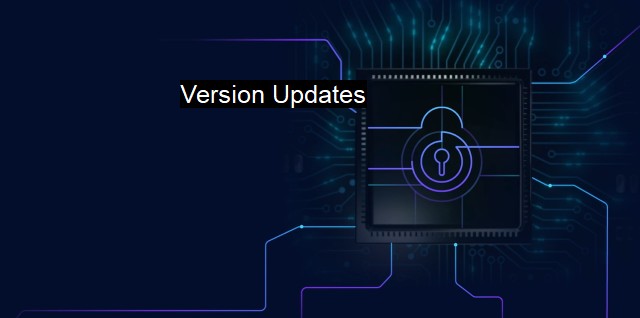What are Version Updates?
Staying Ahead of the Threat Landscape: The Importance of Version Updates in Antivirus Software for Cybersecurity and Data Protection
The concept of "version updates" is a crucial pillar. Software, hardware device, operating system or even an antivirus application; version updates are a common part of them all. As the term suggests, version updates correspond to the newer versions of applications or OS implying an upgrade or enhanced version of the initial software.Understanding version updates, its impact, significance, and relevance is best approached through the lens of cybersecurity and antivirus programs. Cybersecurity is the practice which strives to ensure the protection and safeguarding of data from every kind of cyber threat. Antivirus is one of the fundamental aspects of cybersecurity, focused on detecting, removing, and preventing malicious software, generally known as malware.
In modern day computing environments, every form of software, including operating system or even the antivirus installed on your system is a soft target for cyber-criminals. Hence, version updates in cybersecurity and antivirus sphere play a pivotal role to step up protection and ensure digital safety.
Version updates could divergently mean either upgrading the current software version or applying revisions over the current version often termed as ‘patches’. A software upgrade brings forth new functionalities and an enhanced approach from the prior edition, bolstering efficiency and adding worthy features. Updates, on the contrary, address specific existing issues or known vulnerabilities, though they may not particularly introduce new functionalities. Newer versions or updates of antivirus software carry definitions of freshly formed viruses, and threat-detection methods updated as per the continuously evolving cyber-threat landscape.
Understanding the role these version updates play in cybersecurity will now be clearer. Cybersecurity threats are continuously evolving; Security vulnerabilities act as potential doorways which hackers leverage to install malicious software or acquire unauthorized access to data. Regular version updates work to continuously patch these vulnerabilities, defensive against attack methodologies that are becoming complex with each passing day. As vulnerabilities are identified in software functions, an update along with a fix is soon rolled out by developers. These are usually in the format of 'patches' that are added to the existing software or Operating System.
Suppose a specific version of an antivirus product has a vulnerability where a certain type of new virus isn't detected by its scanning algorithm. What version updates would do is revise this vulnerability and introduce respective enhancements so that the loophole can be closed, and the virus can now be detected by the application.
Experts view the principle of keeping software updated to the newest version as best practices in cybersecurity. Updated versions of a browser, Operating System, antivirus application hold high importance in the context of data security. Software updates are efficient in tackling security breaches. They hold necessary remedies which build walls against cyber-attacks aimed at exploiting software glitches. these updates tackle improvements and patches that assist the software in resisting virus attacks successfully.
Regardless of the perception that updates may seem intrusive and a bit obstructionist due to necessary reboots or closing of applications, the necessity and benefits to cybersecurity, particularly protection measures, are invaluable to overlook. Remember, it is always wiser to keep your security software and other programs up-to-date to stand against the sudden impulse of never-seen-before malware or veteran malware seeking path via a known vulnerability of an outdated version.
Version updates in our devices hence reflect a continuing endeavor to gain operational efficiency together with enhancement to the security framework of our devices. Updating versions are not merely about adding new feature sets; they primarily work towards better and stronger safety from manifold security threats in our interconnected digital world. These efforts significantly contribute to the formation of a robust cybersecurity structure addressing the unpredictability and constantly changing nature of threat scenarios worldwide.

Version Updates FAQs
What are version updates in the context of cybersecurity and antivirus?
Version updates in cybersecurity and antivirus refer to the process of releasing a new software version or patch with improvements in security features, bug fixes, and performance enhancements. Version updates are crucial for ensuring that the software stays relevant, effective and up-to-date with the latest security threats.Why are version updates important in cybersecurity and antivirus?
Version updates are important in cybersecurity and antivirus because they enhance the software's ability to detect and prevent new and evolving threats. As attackers develop new methods to bypass security measures, software updates help to keep up with the changing threat landscape and provide an improved security posture.How can I ensure that my cybersecurity and antivirus software is up-to-date with the latest version?
You can ensure that your cybersecurity and antivirus software is up-to-date with the latest version by enabling automatic updates or regularly checking for updates manually. Most antivirus software has an option for automatic updates, which ensures that your software is always up-to-date with the latest security features and improvements.What should I do if I encounter issues after updating my cybersecurity or antivirus software?
If you encounter issues after updating your cybersecurity or antivirus software, you should contact the software vendor or technical support team for assistance. They can provide guidance and troubleshooting steps to resolve the issues and ensure that the software is functioning effectively.| | A | | | B | | | C | | | D | | | E | | | F | | | G | | | H | | | I | | | J | | | K | | | L | | | M | |
| | N | | | O | | | P | | | Q | | | R | | | S | | | T | | | U | | | V | | | W | | | X | | | Y | | | Z | |
| | 1 | | | 2 | | | 3 | | | 4 | | | 7 | | | 8 | | |||||||